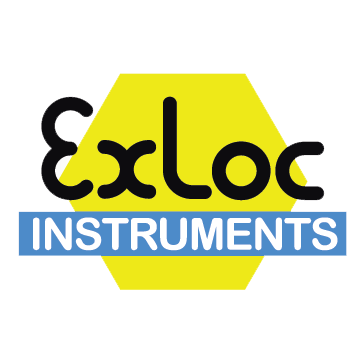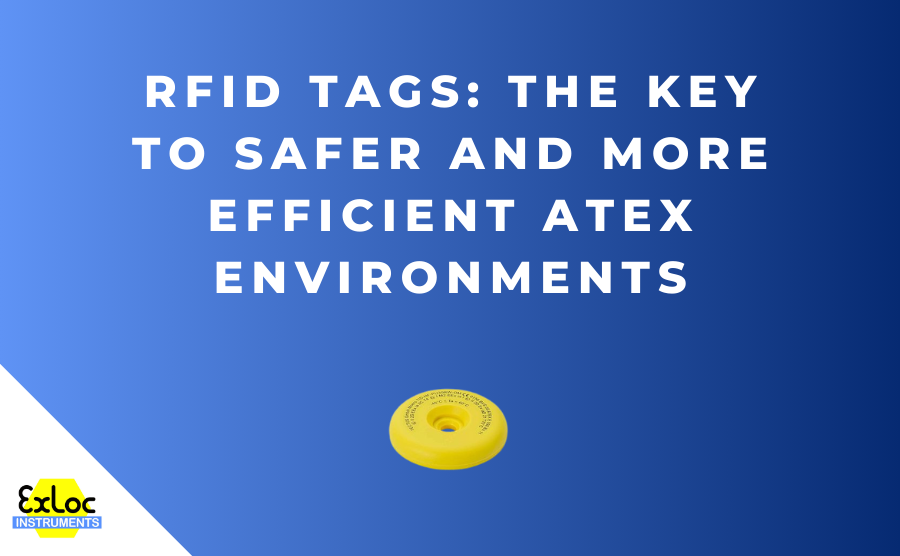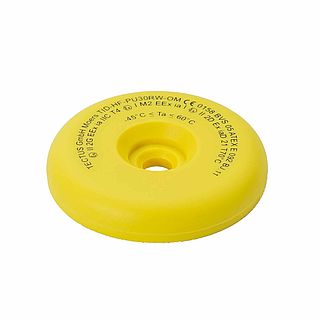In today’s industrial landscape, ensuring safety in hazardous environments is paramount. Understanding these areas’ nuances and implementing robust safety measures is crucial for protecting personnel and assets. In such environments, the significance of stringent safety protocols cannot be overstated. Embracing advanced technologies like RFID tags are instrumental in mitigating risks and ensuring operational safety.
RFID (Radio-Frequency Identification) tags are small electronic devices equipped with a microchip and an antenna that transmit data to a reader via radio waves. These tags, available in passive, active, and semi-passive configurations, offer a seamless tracking and monitoring solution for assets and personnel in ATEX zones. Passive RFID tags are predominantly used in hazardous environments due to their simplicity and cost-efficiency, while active RFID tags, powered by a battery, offer extended read ranges suitable for real-time tracking applications. Operating based on electromagnetic fields, RFID technology excels in ATEX zones where traditional tracking methods may be impractical, providing non-line-of-sight functionality essential for safety and efficiency.
The integration of RFID technology in ATEX zones brings numerous benefits, including streamlined asset management and real-time monitoring capabilities. RFID tags facilitate efficient asset tracking, aiding in the identification, location, and monitoring of critical assets in real-time. This visibility enhances operational efficiency and reduces the risk of asset loss or damage. Real-time monitoring using RFID technology enables proactive safety measures by tracking personnel locations and equipment status, allowing for prompt risk identification and mitigation.
RFID tags find versatile applications within ATEX environments, catering to various industry needs. They play a pivotal role in personnel safety by enabling accurate location tracking, essential during emergency evacuations. Additionally, RFID tags support efficient inventory management, preventing operational disruptions and ensuring regulatory compliance. In equipment maintenance and inspection, RFID technology streamlines processes by enabling automated tracking of service schedules and maintenance history, minimising downtime and enhancing equipment reliability.
Real-world examples highlight the transformative impact of RFID technology on operational efficiency, safety compliance, and cost-effectiveness in hazardous areas. In the oil and gas industry, RFID tags have revolutionised asset tracking and personnel safety, significantly improving inventory control, equipment maintenance, and regulatory compliance. These efficiency gains translate into cost savings and improved overall productivity.
The continuous evolution of RFID technologies presents exciting possibilities for enhancing safety standards and operational efficiency in ATEX environments. Advancements such as ultra-wideband (UWB) and passive sensors are reshaping ATEX compliance, while the integration of RFID with IoT platforms enables predictive maintenance strategies. These innovations allow for real-time monitoring of equipment conditions, preventing costly downtime and enhancing reliability.
Understanding the financial implications of implementing RFID systems in ATEX zones is crucial for making informed investment decisions. While the initial investment may seem significant, the long-term benefits, including improved asset visibility, enhanced safety protocols, and operational efficiency, result in substantial returns on investment.
Comparing RFID technology with alternative asset management systems like barcoding and GPS tracking reveals RFID’s advantages in non-line-of-sight scanning, bulk asset tracking, and real-time data capture. While barcoding is cost-effective, it lacks RFID’s efficiency and adaptability in complex environments. GPS tracking, although useful for outdoor applications, faces limitations in indoor coverage, making RFID a more practical choice for hazardous areas.
In summary, RFID technology serves as a versatile and efficient solution for enhancing safety and productivity in ATEX hazardous areas. By leveraging RFID tags, organisations can streamline operations, improve asset management, and ensure compliance with stringent safety regulations, ultimately fostering a safer and more efficient working environment. At Exloc, we supply HF RFID tags from TECTUS as well as providing a range of devices which are capable of reading the tags including many of our ATEX Tablets and Smartphones.
If you need advice or would like to discuss your hazardous area needs further then contact our team of experts today.



